This article will provide a comprehensive introduction to MimbleWimble and the new crypto currency based on MimbleWimble, Grin and Beam. The introduction of this article includes: the features of MimbleWimble, the mining, trading and other aspects of Grin and Beam. Finally we will also compare Grin and Beam.
MimbleWimble
MimbleWimble is a format and protocol for blockchain privacy protection, which can prevent blockchains from revealing private information. It gets the name from Harry Porter as a protective incantation to guard against the evil magic curse: “Anyone who tries to talk about the secret to be hidden will have him blocked outside and his tongue tied up”, so that he cannot reveal anything from his month to keep the secret.
The original white paper on MimbleWimble was released in 2016.
MimbleWimble was created to improve the scalability and privacy of cryptocurrency. Based on enhanced encryption system, MimbleWimble provides very good scalability, privacy and substitutability to realize the anonymous transactions and privacy protection on blockchains.
Two Basic Attributes
MimbleWimble relies on two basic attributes for transaction confirmation:
- Zero sum verification. If the output sum minus input sum is equal to zero, it proves that the transaction creates no new funds and the actual amount will not be displayed.
- Private key means ownership of transaction output. Like most other cryptocurrencies, transaction output usually verifies ECC private key to guarantees the ownership. However, the MimbleWimble does not prove private key ownership by direct transaction signing.
MimbleWimble makes up for the gap between almost all existing blockchains and the real demand. The currency system (gold, cash, barter trade) in real demand must meet the following two conditions:
- It must verify that the number of currencies received is equal to the that of issued.
- People can only make electronic transfers from his own bank account instead of that of others. It must be able to verify that the transaction was conducted by the private key holder of debit card and personal password/online banking password or the cryptocurrency.
Three Reasons Ensure the Privacy and Scalability
Bitcoin meets the two requirements of the currency system by revealing three secrets, which means each bitcoin transaction reveals three secrets:
- Sender address
- Bitcoin number to be sent
- Receiver address
Without revealing the aforesaid three secrets, MimbleWimble can meet the two conditions.
MimbleWimble provides a better way to optimize crypto currency, which can save storage space while providing better transaction privacy. In MimbleWimble, there is no transaction address and even the transaction amount is hidden; meanwhile the intermediate transactions can also be merged. The effect of “killing two birds with one stone ” is achieved by means of delicate design, which is equivalent to improving the scalability of blockchain. Merger means that in all the transactions to be packaged in blocks, if A needs to transfer money to B while B needs to transfer to C, then it only needs to record the transfer from A to C instead of both the two transactions. That’s say, the intermediate transactions are merged with B’s signature, which can not only ensure the security of the transaction, but also reduce the UTXO size and the space required for the block storage.
In MimbleWimble, the following three reasons ensure the privacy and scalability:
- No address in blockchain, the receiver must construct new transaction witness for every transfer.
- Transaction amount is also hidden.
- Intermediate transactions are merged that it’s hard to track based on little information.
One of the main differences between bitcoin and MimbleWimble is that the latter supports confidential transactions. The main advantage of MimbleWimble is that it provides small storage space while protecting greater privacy, which is suitable for large-scale transactions; one of the most exciting aspects about MimbleWimble is that it is a solution with scalability. MimbleWimble intends to make all transactions anonymous. It is in this circumstance that the cryptocurrency Grin and Beam came into being based on MimbleWimble protocol.
Beam
Beam adopts MimbleWimble blockchain protocol to protect privacy. Under this protocol, all Beam transactions are private by default. To replace the address, the parties create a public multi-signature key to verify transaction and no one can view any private information about the sender, receiver or transaction amount. Only the two parties of transaction know that they are trading to protect privacy on the network.
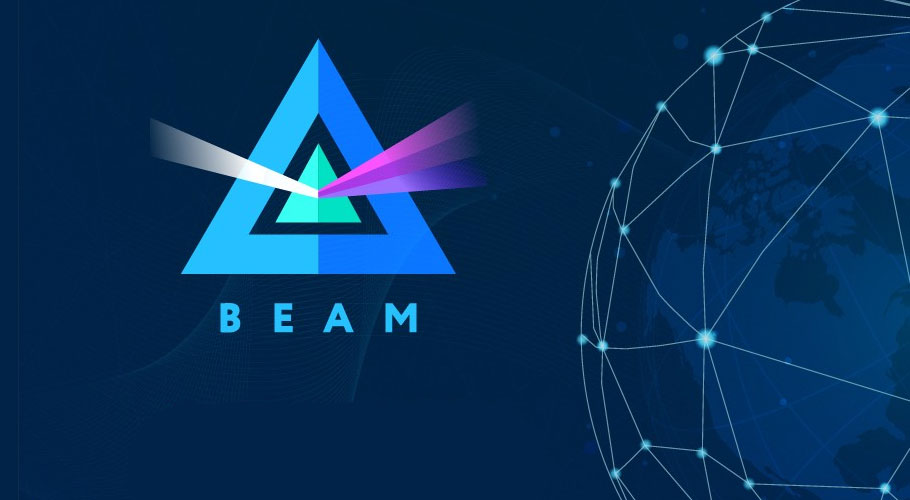
In the Beam network, if new nodes need to join in the network, they can only apply to synchronize the compressed records containing system status and block headers instead of all previous transaction records, thus accelerating the synchronization process.
Beam also provides options for information transparency, the users can decide what information to share and with whom to share.
Without ICO or pre-mining, Beam project receives capitals through Treasury funding model. When every block has been mined, a certain percentage of additional rewards will be used to fund the Beam project development. The non-profit foundation will be established to manage the Beam protocol after it’s released on the mainnet.
Currency Information
- Name: Beam
- Consensus: POW
- Algorithm: Equihash
- Programming Language: C++
- Block Time: 1 minute
- Block Size: 1M
- Block Reward: 80 Beams/block in the first year; 40 Beams/block in 2-5 years; 25 Beams/block in the 6th year; then halved every 4 years until 129 years. Release to be stopped after 133 years. The total amount equals to 262.8 million.
- Mainnet Date: January 3, 2019
- Official website: https://www.beam.mw/
- Block Browser: https://explorer.beam.mw/blocks
- Wallet and mining tools: https://www.beam.mw/downloads
Roadmap
- March 2018: project launched
- June 2018, internal output of conversion program: mining node, command line wallet development
- September 2018, online for public test: open source code for community, test of 50 mining nodes, desktop wallet development
- January 2019, online at official website: release desktop wallet applications, CLI wallet, OpenCL and CUDA mining programs, release blockchain browser, support other encrypted cryptocurrencies
- Backbone network planning in 2019: Bitcoin for atomic swap, integrated bitcoin wallet, mobile wallet (Android), payment platform integration (API), hardware wallet integration, mobile wallet (iOS), choose for review, web wallet
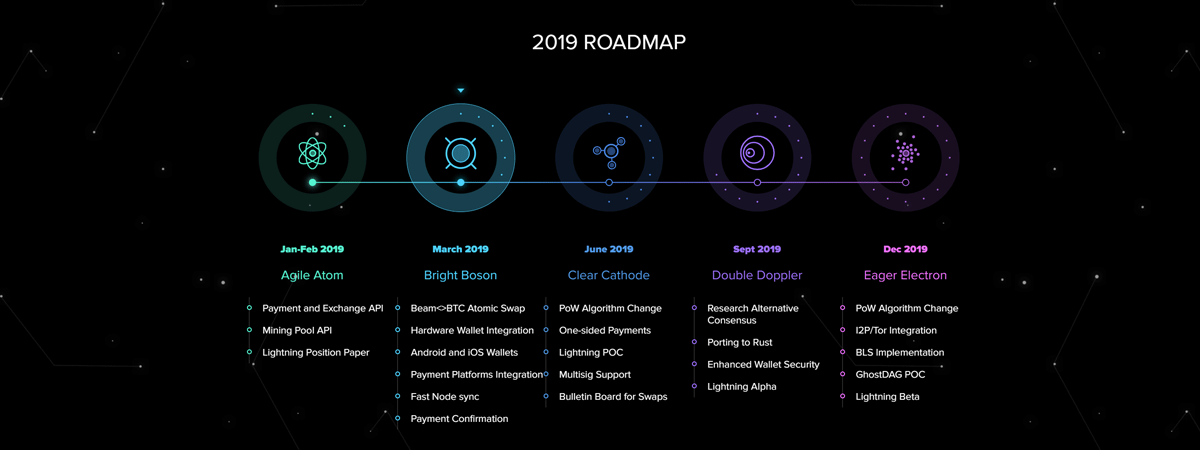
Treasury
In the first year, the Treasury will charge 20 Beams additionally over every block, and from the 2nd year to the 5th year, the Treasury will receive 10 Beams from every block.
The Beam distribution by the Treasury is based on the ratios below quarterly:
| Investors | 40% |
| Core team | 40% |
| Foundation | 20% (the largest single beneficiary) |
Mining
- Miner: graphics card, minimum memory 4GB.
- Mining pool: f2pool, Spark Pool, Bee Pool
- Exchange: BitMesh, Hotbit, MXC
BEAM supports AMD and Nvidia, 4G or above video memory, Cuda 9.2 or above. Before mining, the virtual kernel needs to be set as large as possible. At least 4G for every graphics card, in the case of delay, it’s recommended to add virtual memory.
Adjustment of mining difficulty: The goal of updating difficulty is to keep the average blocking time at a specific value.
Example: Suppose 100 mining worker in the network, about one per minute. Now there are more than 100 workers with doubled hashrate, it takes only 30 seconds to find a solution. If there are more than 200 workers, the time will be halved to 15 seconds, and so on.
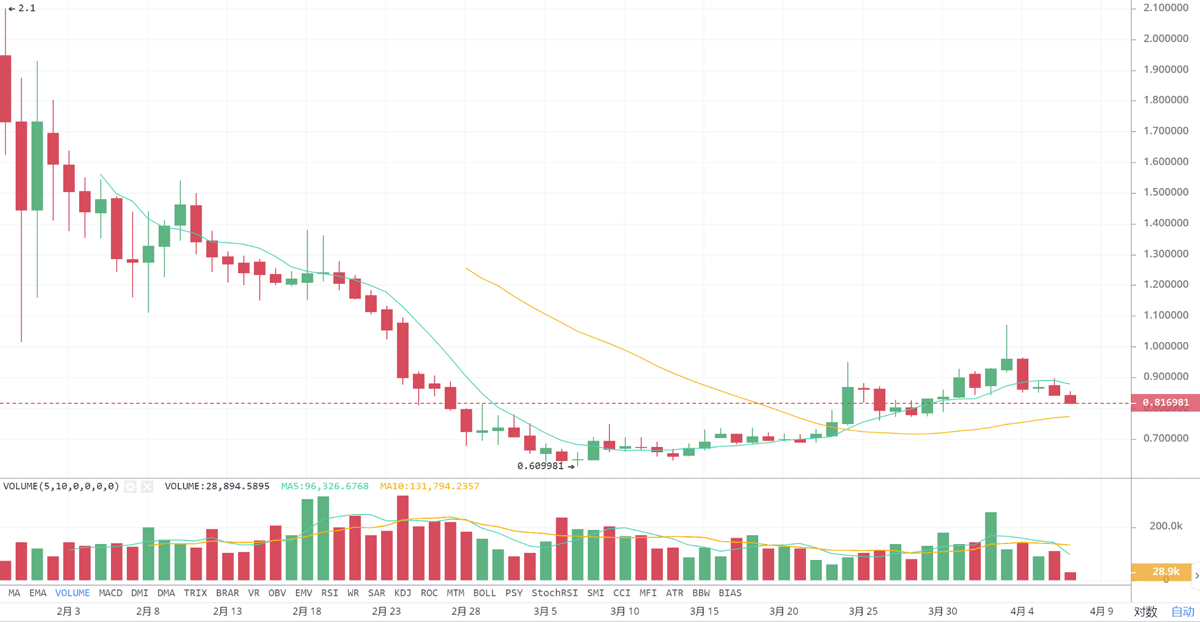
Overclocking: Because of the BEAM’s specific requirements, overclocking should focus on video memory with core as the supplementation. Recommended values: power consumption 70-80, core 0-40, video memory 300-600, with appropriate adjustment based on specific graphics cards.
To ensure hashrate dispersion and prevent ASIC miners, the BEAM team plans to perform one or two hard forks in the first 12 to 18 months, the first is about 6 months later and the other is about 12 months later. Each hard fork will change the mining algorithm. The revised plan will be revealed a few weeks in advance.
Hashrate of Various Graphics Cards (OpenCL Miner)
| Model | Hashrate | |
| AMD | AMD RX560 | 4 Sol / s |
| AMD RX570 | 7-8 Sol / s | |
| AMD RX580 | 8-9 Sol / s | |
| AMD RX Vega 56 | 13 Sol / s | |
| Nvidia | Nvidia GTX 1066 | 5.25 Sol / s |
| Nvidia GTX 1050Ti | 2.2-4.8 Sol / s | |
| Nvidia GTX 1060 6Gb | 5 Sol / s | |
| Nvidia GTX 1070 | 7 Sol / s | |
| Nvidia GTX 1080 | 8-9 Sol / s | |
| Nvidia GTX 1080Ti | 10-11 Sol / s | |
| Nvidia GTX 2080 | 10-11 Sol / s |
Block data (as of January 10, 2019, 14:12)
- Block height: 9782
- Current production: 782560 Beam
- Current block difficulty: 132910068
- Current price: 9.5 yuan (hotbit.io)
- Hashrate: 2215167.8 Sol/s
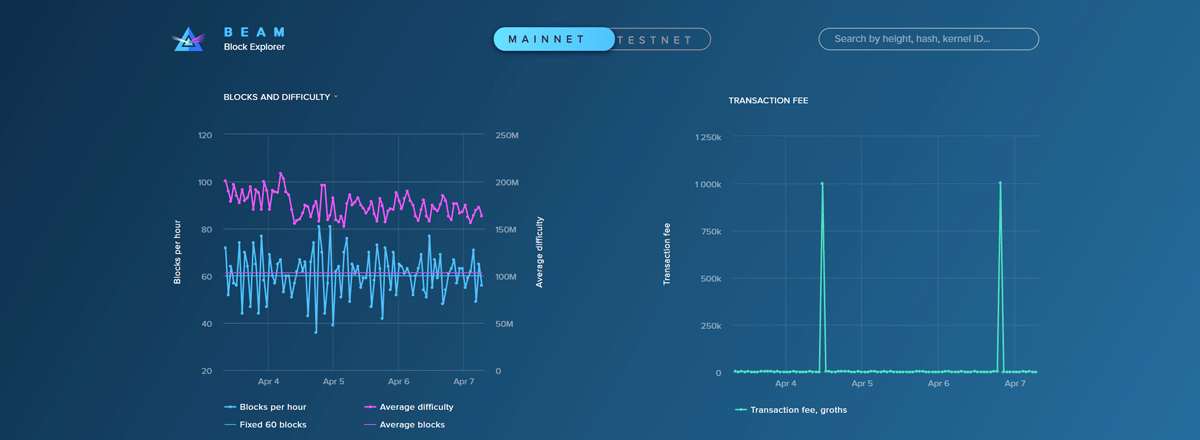
Grin
Grin came into being in November 2016 as an open-source software project based on the MimbleWimble, just like Beam. It’s an cryptocurrency with privacy and scalability. Beam has already been online on January 3, 2019, and Grin plans to be online on January 15, 2019. The Grin project has no pre-distribution, no investment and no ICO. All the coins need to be mined by the workers and all the capitals come from community funds.
The spirit of Grin project —- the developers and communities committed to Grin are all volunteers, who hope to develop technology rather than creating an ICO or mining for profit, it is a completely decentralized project.
The official website explains Grin as follows: electronic transactions for all without reviews or restrictions, as well as three features: private, scalable and open.
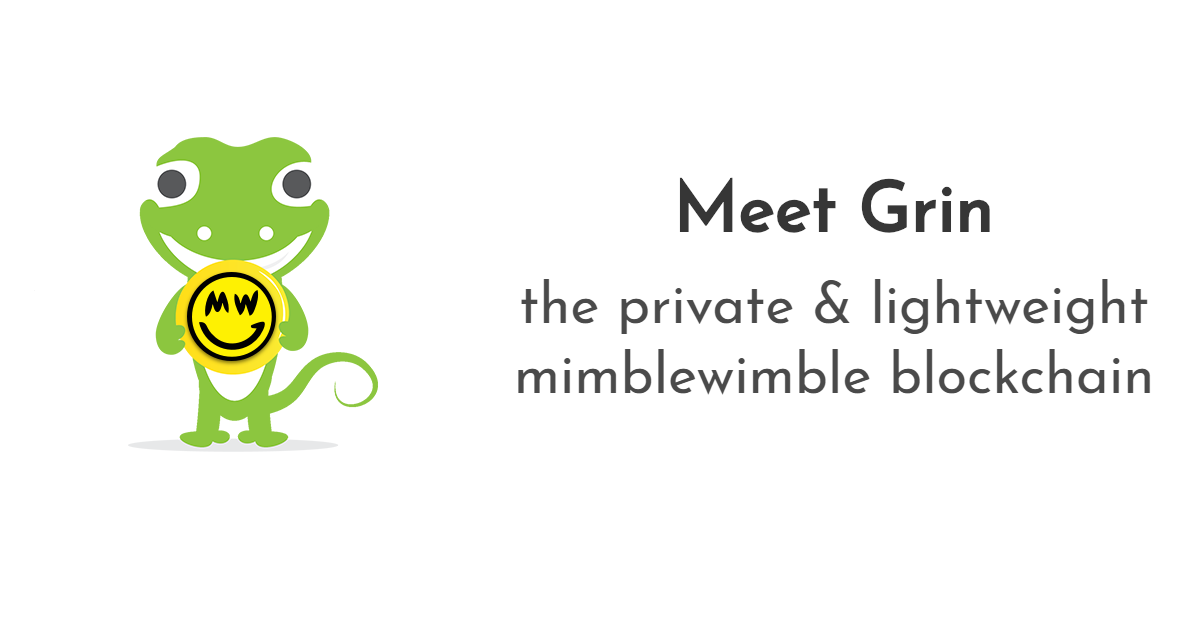
Both Beam and Grin are based on MimbleWimble, why is Grin more popular? Maybe because:
- Since the underlying protocols and projects are released by anonymous people, as well as community decentralization, idealistic atmosphere and the mystery, it attracted the attention of many members of early bitcoin community;
- No investment for the team and everyone can only make profit through mining, which is quite similar to bitcoin. The currency policy is very special: no upper limit for issuing, stable growth for neither inflation nor deflation.
- When Beam was looking for investment, the investors discovered Grin during the investigation. Beam had no open-sources but Grin did. The investors found that code quality of Grin was particularly excellent, so they refused to invest in Beam and turned to Grin. The same thing also really happened: When an engineer who was busy with DApp development all the time was asked which to choose: Grin or Beam, he answered he knew nothing about Beam because everyone around him only focused on Grin. He said that once he had completed his work, he would take out the desktop computer for mining, “maybe I’m lucky enough to obtain the early Grin.”
Currency Information
- Name: Grin
- Consensus: Proof of Work (POW)
- Algorithm: Cuckoo Cycle
- Programming Language: Rust
- Block Time: 1 Grin/second, 60 per minute
- Block Reward: 60 Grins, no upper limit, online date: January 15, 2019
- Official Website: https://grin-tech.org/
- Block Browser: https://grinscan.net/
- Mining Data: https://grinscan.net/charts
- Resource Download: https://github.com/mimblewimble/grin/releases
Grin’s release policy is designed based on the following two principles:
- First, if monetary policy is deflation, avoid gains of early worker more than that of later workers.
- Second, regular quantitative issuance will make it easier for Grin to become a currency instead of a value storage like bitcoin. If the value of Grin is stable, more people will prefer to use it rather than speculative storage.
The user of mining group in China once remarked: “The author(founder) really didn’t want Grin to become a speculative target. However, everyone in the group is eager to make it into a speculation.”
Mining
Mining pool: https://www.mwgrinpool.com/
Mining Requirement:
rust 1.30+ (use rustup- i.e. curl https://sh.rustup.rs -sSf | sh; source $HOME/.cargo/env)
cmake 3.2+ (for Cuckoo mining plugins)ncurses and libs (ncurses, ncursesw5)
zlib libs (zlib1g-dev or zlib-devel)
linux-headers (reported needed on Alpine linux)
and a running Grin node that can be accessible
Mining Tips:
- All AMD and NVIDIA 8GB cards are supported. RTX 8GB card needs to run in Linux or Windows 7 currently, because Windows occupies too much memory of these cards (to be
- The RTX 2080 and RTX 2080Ti are the fastest, the OpenCL code for AMD card is being optimized. If there are multiple graphics cards on miner, it’s not recommended to use cheap Celeron CPU.
- Platforms supporting mining plugins: Linux x86_64 and MacOS [grin + mining + development], Windows version has not been developed yet.
Mining Speed on Windows
| GPU | Speed, GPS | Power, W |
| 1080Ti | 3.8 | 165 |
| 1080 | 3.5 | 120 |
| 1070Ti | 3.1 | 110 |
| Vega | 2.0 | 100 |
| RX480 | 1.0 | N/A |
| R9 390 | 0.8 | N/A |
Summary
MimbleWimble based crypto currency Grin and Beam comparison table:
| Grin | Beam | |
| Consensus | POW | POW |
| Algoritm | Cuckoo Cycle | Equihash |
| Language | RUST | C++ |
| Max Supply | Infinite | 262.8M |
| Block Time | 1 minute | 1 minute |
| Coin Emission | Linear | Similar to Bitcoin |
| Block Reward | 60 Grin/block forever | Capped at 263 million |
| Founder’s reward | None | 20% of mined coins for the first 5 years |
| ICO | NO | NO |
| Funding Model | Community | Block Rewared Cut |
| Governance | Community Governance | Beam Foundation |
| Mainnet | Jan 15, 2019 | Dec 2018 |
Appendix Ⅰ
- Mimblewimble white paper: http://www.mimblewimble.cash/20160719-OriginalWhitePaper.txt
- Beam documentation: https://documentation.beam.mw/en/latest/
- Beam Position Paper: https://docs.beam.mw/BEAM_Position_Paper_v0.2.2.pdf
- Grin Wiki: https://github.com/mimblewimble/docs/wiki
- Grin Introduction: https://github.com/mimblewimble/grin/blob/master/doc/intro.md
Appendix Ⅱ
Series articles on cryptocurrency introduction and analysis at EastShore:
- What Are People Arguing Against and for Bitcoin? | EastShore Mining Devices
- With the upcoming Litecoin Halving, Will Litecoin Maintain Its Status? | EastShore Mining Devices
- Where are the Mainstream Cryptocurrencies Heading to? | EastShore Mining Devices
- What’s the Charm of DASH? | EastShore Mining Devices
- The Untraceable Private Crypto Currency Monero | EastShore Mining Devices
- What’s Going on with DAG? | EastShore Mining Devices
- Is XDAG the Next Dark Horse? | EastShore Mining Devices
- Introduction of New Cryptocurrency Grin and Beam Based on MimbleWimble | EastShore Mining Devices
- Emerging New Cryptocurrencies | EastShore Mining Devices
- What will Facebook’s Libra bring to the world? | EastShore Mining Devices
- Observation and Reflection on Application of Private Currency | EastShore Mining Devices
- Introduction to Technical Framework and Applications of IPFS | EastShore Mining Devices
*Photo Credit: Ethfans

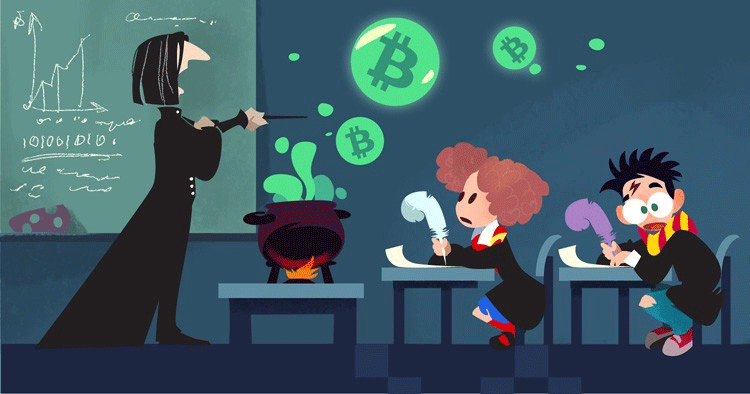
Pingback: Emerging New Cryptocurrencie | EastShore Mining Devices
Pingback: What will Facebook's Libra bring to the world? | EastShore Mining Devices
Pingback: Introduction to Technical Framework and Applications of IPFS | EastShore Mining Devices
Pingback: What's the Charm of DASH? | EastShore Mining Devices
Pingback: Observation and Reflection on Application of Private Currency | EastShore Mining Devices